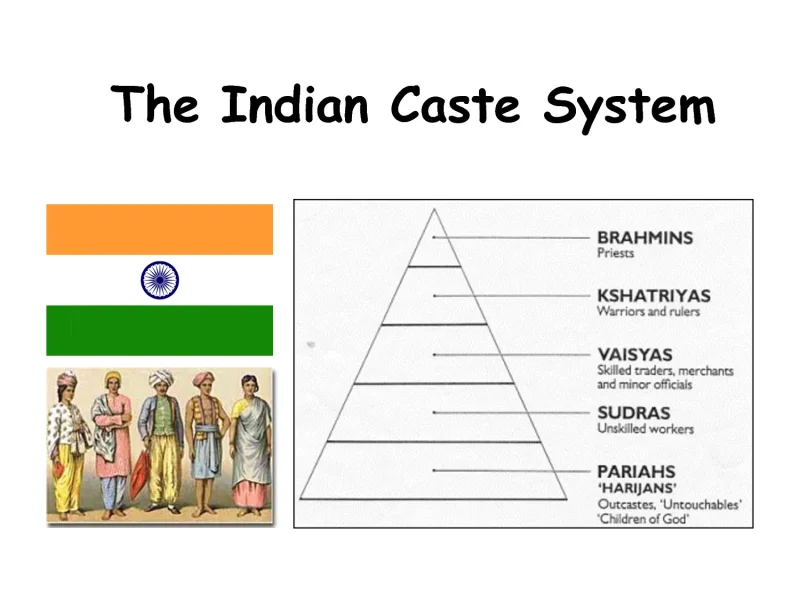-
This forum contains old posts that have been closed. New threads and replies may not be made here. Please navigate to the relevant forum to create a new thread or post a reply.
You are using an out of date browser. It may not display this or other websites correctly.
You should upgrade or use an alternative browser.
You should upgrade or use an alternative browser.
Quick question - Is it only Hinduism that has castes?
- Thread starter JR
- Start date
- Status
- Not open for further replies.
prasad1
Active member
I was going through that thread on 'Prepared by Brahmins' and started wondering about this -- does only Hinduism have castes, or how about other Asian religions, like Buddhism, Confucianism, Shinto, Taoism, etc?
Converted Hindus carry their caste into other religions.
I had a friend who was Goan Christian and used to call himself Brahmin Christian.
The earliest reference to Caste in Hindu literature. It started in dharmashastras . And unfortunately these dharmashastras is claims sanctity in the name of Vedas, and thus indirectly discrediting Rig Veda for the social evil of caste system.
The caste system in India is a system of social stratification[SUP][/SUP] which historically separated communities into thousands of endogamous hereditary groups called jātis,usually translated into English as "castes". The jātis are thought of as being grouped into four varnas:[SUP][/SUP] Brahmins, Kshatriyas, Vaishyas and Shudras. Certain groups, now known as "Dalits", were excluded from the varna system altogether, ostracised as untouchables.
Traditional scholars identified caste system with Hinduism in the Indian subcontinent, but the system is found in other religions, albeit on a smaller scale, including Buddhism, Christianity, Islam, Judaism and Sikhism in the Indian subcontinent.
Caste system in India - Wikipedia, the free encyclopedia
prasad1
Active member
The origins of the caste system in India and Nepal are shrouded, but it seems to have originated more than two thousand years ago. Under this system, which is associated with Hinduism, people were categorized by their occupations.
Although originally caste depended upon a person's work, it soon became hereditary. Each person was born into a unalterable social status.
The four primary castes are: Brahmin, the priests; Kshatriya, warriors and nobility; Vaisya, farmers, traders and artisans; and Shudra, tenant farmers and servants. Some people were born outside of (and below) the caste system. They were called "untouchables."
Although the early Vedic sources name four primary castes, in fact there were thousands of castes, sub-castes and communities within Indian society. These jati were the basis of both social status and occupation.
Castes or sub-castes besides the four mentioned in the Bhagavad Gita include such groups as the Bhumihar or landowners, Kayastha or scribes, and the Rajput, who are a northern sector of the Kshatriya or warrior caste.
Some castes arose from very specific occupations, such as the Garudi - snake charmers - or the Sonjhari, who collected gold from river beds.
History of the Caste System in India
Attachments
Accepted Caste System existed in Japan. It continues to exist there. But then the Japanese buy their way out of any situation.
https://en.wikipedia.org/wiki/Burakumin
Indian Castes and Feudal Japanese Classes (Comparison)
https://thesevenworlds.wordpress.co...he-untouchables-in-the-japanese-caste-system/
https://en.wikipedia.org/wiki/Burakumin
Indian Castes and Feudal Japanese Classes (Comparison)
Not until the 20th century did groups of burakumin begin organizing for their cause; in 1922 a national organization, Suiheisha (Organization of Levelers), was created, and it engaged in various school boycotts, tax revolts, and other protests until its disbandment in 1941. After World War II, in 1946, a more militant and politically active organization was formed: the Buraku Kaihō Zenkoku Iinkai (All-Japan Committee for Buraku Liberation), which in 1955 was renamed Buraku Kaihō Dōmei (Buraku Liberation League). Its leftist orientation, however, alienated more conservative burakumin leaders. Thus in 1960 a rival national organization, Dōwakai (Society for Integration), was founded; it came to be led by Liberal Democratic politicians, some of whom were elected to the national Diet. A third organization, the Zenkoku Buraku Kaihō Undō (All-Japan Buraku Liberation Movement), was formed in 1976.
https://thesevenworlds.wordpress.co...he-untouchables-in-the-japanese-caste-system/
Hinduism has no caste!
Technically you are right!
Hinduism does NOT have a caste system..it only has a Varnashrama system.
I don't see why people equate casteism (which is a social hierarchy) with Hinduism (which is a religion). To me religion is a spiritual search for the divine. No God came and said: "Thou shalt have 4 castes".
I think we can compare religions to each other. We can also compare social structures to each other. For sure there were social classes in fedual Europe, England, Russia, Japan, China etc. But that is quite independent of divine worship.
I think we can compare religions to each other. We can also compare social structures to each other. For sure there were social classes in fedual Europe, England, Russia, Japan, China etc. But that is quite independent of divine worship.
- Status
- Not open for further replies.
Similar threads
- Replies
- 0
- Views
- 787
- Replies
- 0
- Views
- 942
- Replies
- 0
- Views
- 4K

